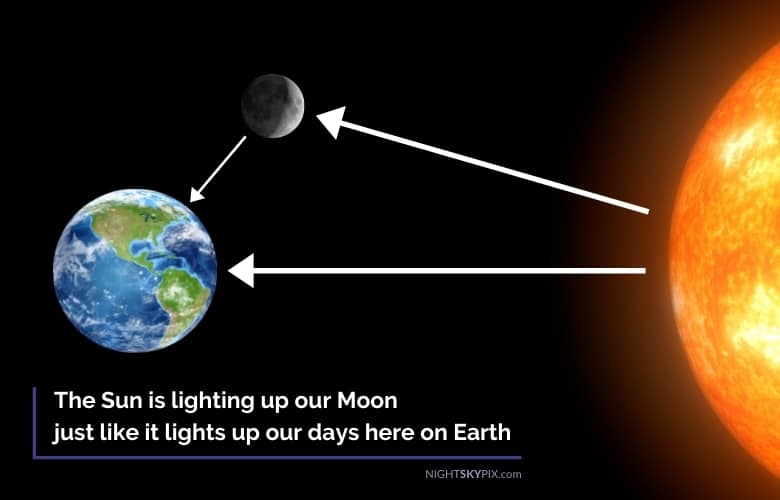What causes the moon to shine reflection from the sunlight

What Causes the Moon to Shine? Reflection from the Sunlight

Have you ever glanced up at the night sky and marveled at the beauty of the illuminated Moon? While it may appear to have its own source of light, the truth is that the moon shines due to the reflection of sunlight. This fascinating phenomenon not only captivates our imagination but also plays a crucial role in creating the mesmerizing lunar glow we witness from Earth.
As the Earth’s only natural satellite, the Moon orbits around our planet, reflecting sunlight that falls upon its surface. Despite lacking an atmosphere to scatter light, the Moon continues to shine brightly, thanks to the process of reflection. When sunlight reaches the Moon, its surface acts as a mirror, bouncing the light back towards Earth.
It’s interesting to note that the Moon’s surface, covered in fine, powdery dust and an array of rocks and craters, is relatively reflective. This property allows the Moon to reflect a significant portion of the sunlight it receives, creating its luminous appearance in the night sky.

However, the Moon’s reflective ability is not uniform across its entire surface. Certain areas, such as the lunar highlands, exhibit greater reflectivity due to their composition, which consists predominantly of lighter-colored rocks. These regions reflect more sunlight compared to the darker areas, such as the lunar maria, which are composed of basalt, a type of volcanic rock.
The varying phases of the Moon are a direct result of how much sunlight is being reflected back to Earth. As the Moon orbits the Earth, different portions of its sunlit side become visible to us. When the Moon is positioned between the Earth and the Sun, the side facing us is in complete darkness, resulting in a new moon. Conversely, during a full moon, the entire illuminated side of the Moon is visible from our vantage point on Earth.
Besides its purely aesthetic appeal, the Moon’s brightness has remarkable practical implications. Throughout history, civilizations have relied on the Moon’s light as a natural source of illumination during the night. This has facilitated various activities such as travel, hunting, and even aiding nighttime observations.
In conclusion, the Moon’s shining nature is not the result of its inherent luminosity but rather a consequence of sunlight reflecting off its surface. The Moon functions as a celestial mirror, reflecting the brilliance of the Sun back to us here on Earth. This stunning interplay of sunlight, reflection, and lunar composition creates a captivating spectacle that has captivated humans for centuries.
References:
Tags
Share
Related Posts
Quick Links
Legal Stuff

